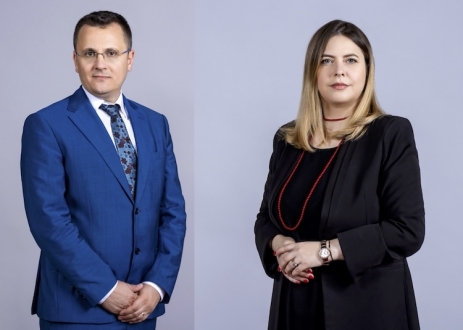
by Mariana Popa, Partner VF Insolvență
„En sport, on dit que l’essentiel c’est de participer.
A la procédure d’insolvabilité, au contraire, l’essentiel c’est ne pas participer! ”
Bernard Soinne
There are a number of theories that promote the positive side of eliminating less performing companies, through competitive market forces. These ones will be replaced by new, better performing companies, which means that the private environment is in a continuous dynamic of regeneration, a process also known as "creative destruction".
The Covid-19 pandemic shook humanity to its foundations, bringing not only a profound change in the way of life, but also an economic deterioration, which will certainly be marked by insolvencies with a high social impact, with the consequence of massive loss of jobs, but, also, the reallocation of the assets of the companies that will be liquidated to other efficient companies.
The World Economic Forum grimly announces that the pandemic will cost the global economy $ 1 trillion this year, with vulnerable communities being the hardest hit. The economic impact of coronavirus varied from one industrial sector to another and from one enterprise to another, depending on a number of factors, such as the exposure to China as a source of intermediate inputs, the possibility of resorting to alternative suppliers, the existence of stocks or the dependence on "just in time" production processes.
In such a climate, a company managed with integrity and equipped with a correct management program is better placed to overcome the crisis and to face the future economic environment. The insolvency phenomenon is a complex one and also difficult to manage without specialized expertise, without trully professionals. Two renowned American authors, James T. White and Raymond T. Nimmer, said that "too often novices believe that the law is everything, but the veteran knows very well that the law is nothing, the facts are everything."
Modern trade is based on credit, but especially on confidence given the fact that the business partner shall pay his debt on time. Non-payment due to insufficient funds is a serious incident, which can degenerate into a chain of insolvencies, a phenomenon that must be avoided. From the extensive process that insolvency constitutes, its economic component is the one that concerns, first of all, the creditors. The expert in managing these type of crisis is the insolvency practitioner, who, through his reputation and long experience in the market, ensures that the implemented measures will follow the principle of maximizing creditworthiness and that the debtor's resources can and will be managed correctly and within the limits of legality.
The debtor must know that the insolvency law is the only “umbrella for bad weather”, because it imposes discipline, order and sacrifices to all the contractual partners in exchange for the hope in a subsequent payment. The totality of the debtor's assets and financial relations are subject to recovery in two ways: freezing the outstandings prior to the opening of the insolvency proceedings and encouraging the contractual partners to participate in the recovery efforts and even to accept to sacrifice some of their claims. But the efficiency of the insolvency procedure is conditioned, sine qua non, by the speed of the procedural phases, by the speed at which the syndic judge is invested to decide the “protection” of the debtor. Once the insolvency procedure is opened, the debtor and the creditors will be orchestrated, within the limits of the law, by the judicial administrator, who, all together, can develop countless strategies to successfully pass through this undesirable and even inconceivable phenomenon for some.
At the end of the emergency period and the beginning of the alert period, the legislators agreed to consider several legislative proposals to support the participants in the economy that are affected by the crisis, leaving to their assessment whether to open or not their insolvency proceedings for 30 days period since the end of the alert state. The minimum claim for opening the insolvency proceedings has been increased and the creditors may apply only after a reasonable attempt to conclude a payment agreement with the debtor, proven with documents communicated between the parties by any means, including electronic ones. . Subjects who were already under insolvency proceedings or prevention of insolvency are also considered by the authorities which may extend several time limits and, most important, may prolong the period of observation or reorganization up to 5 years.
It should be pointed out, however, that in insolvency, a well-defined business before the pandemic will be protected from the accumulation of new penalties, interest and late fees, will be able to terminate harmful or unprofitable contracts, or will be able to renegotiate certain clauses, will recover debts without paying taxes and will take effective measures to balance the cash flow quickly, without undue effort and cost, just by appealing to the team of multidisciplinary insolvency practitioners with the right expertise. Thus, quoting the late Prof. Univ. Dr. Ion Turcu, the insolvency procedure rediscovers her vocation as a nurse at the head of the suffering debtor, imagining, instituting and testing therapeutic means, meant to avoid the economic disorders inherent in bankruptcy.



 May 15, 2020 11:35
May 15, 2020 11:35 










